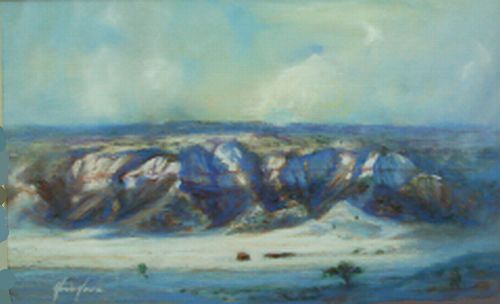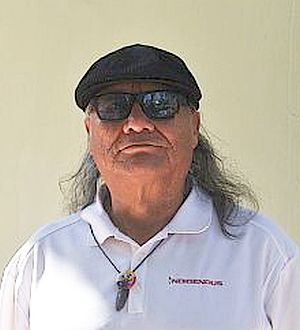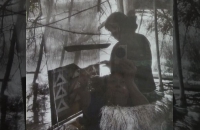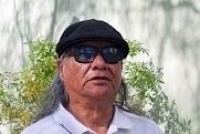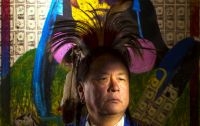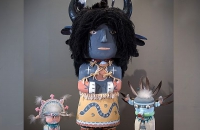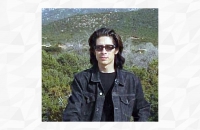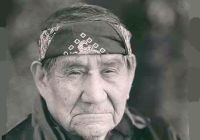“Navajoland” is an original pastel by Navajo artist Jack Tobaahe Gene. The 8” x 5” pastel is a landscape on the Navajo Reservation with a hogan in the foreground. Circa 2002
Jack Tobaahe Gene was born on the Navajo Reservation in 1953 and raised in the hills of Smoke Signal, Arizona. Jack Gene paints what he sees and knows-the life and landscape of the Navajo Reservation. He states “I am a painter but more importantly I am Dineh, and being Dineh is living in beauty.”
Jack Gene studied under Donald Putnam, Harley Brown and Leslie DeMille at the Scottsdale Artists School. He has won numerous awards nationwide.
About the artist
Jack To’Baahe Gene
“Some artists, clutching an Art diploma, rush out to become
famous and wealthy overnight. Almost invariably they learn the truth, which
Is that being an artist, like being a person, is a lifelong process of self-improvement.
[Jack To Baahe] Gene understands that basic truth: asked what he’d like to be doing
20 years from now, he said, “What I’m doing now – painting – but better known.”
Art Talk Magazine February 1991
Mud, smoke, dust, stars and sand…These are the elements that shape the lives of the Dineh (Navajo).
Jack To’Baahe Gene was born into the world of the Dineh and raised by his paternal grandparents in the remote hills of Smoke Signal, Arizona. From his grandfather, a medicine man, he learned the spiritual ways of his people. From his grandmother, an herbalist and weaver, he learned of the powers invested in all living things. “They taught me to see things, to observe.” Jack Gene remembers, “While I was growing up, they were teaching me art with everything they did. They would say, ‘See, the trees and plants are moving, they are alive.’ We’d look at the clouds and the mountains. Now my art is based on all those things, but are not just clouds anymore. I’m going beyond what my grandparents taught me. Now I strive for the soul of clouds and mountains.”
His formative years were spent under the great skies of the Colorado Plateau, riding long distances on horseback, listening to stories and singing the songs of the Dineh. Within the Hogan, Jack worked with colored sands to create the beautiful and symbolic sand paintings for which the Dineh are famous. It was here that the artist within began the long journey out into the modern world.
Today, Jack Gene is a consummate professional artist who paints directly from the soul of the Dineh culture. His images are colorful, compelling and intimate visions of a land and people long hidden from the outside world. His painting style is a unique combination of influences: from Native sand painting to the European painting traditions of Rembrandt, Millet and Courbet. Sand finds its way into his surfaces; made rough to flesh out the coarseness of life lived on bare ground. Bold color rakes through images of clothing or hillsides, a modernist’s color sensibility fused to an ancient awareness. Everything is symbolic; nothing is exactly what it appears to be. In this way, Jack brings to life, through painting, the visions of the medicine world, the world of the healer. For this is what he is, a healing path between opposites: the ancient and the modern; the past and the future; the sand and the spirit.

